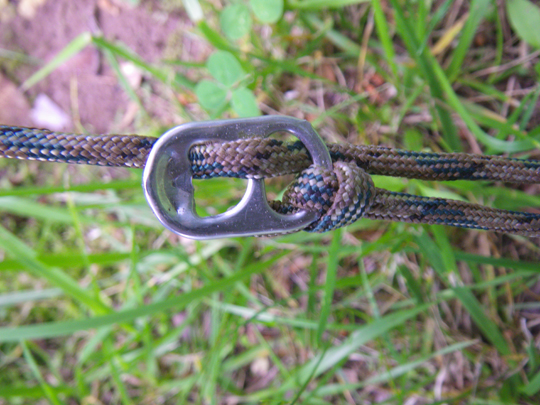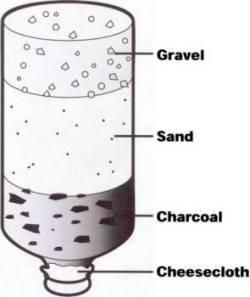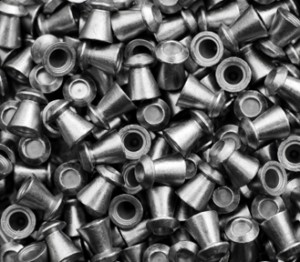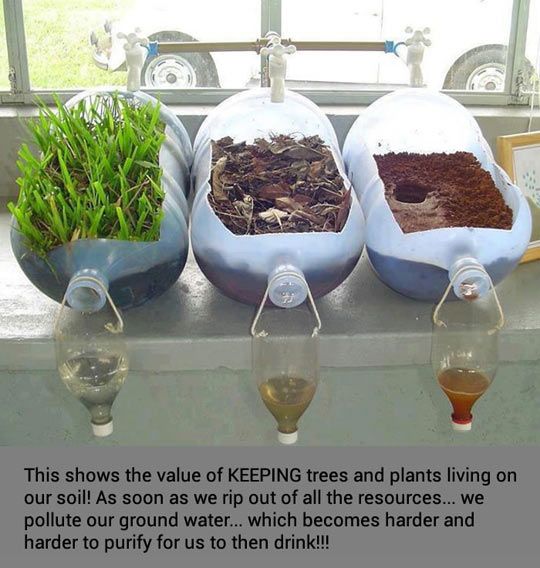Like millions of others on Sunday night, I plopped down in front of the TV to watch National Geographic’s American Blackout. I was curious to see how the hypothetical scenario of a 10 day nationwide power outage caused by terrorism would be portrayed. I was also watching this as I do with each episode of Doomsday Preppers to gain new insight or ideas from the other people on the show. While there are some silly moments and outlandish situations on some of the more notorious prepping shows, there are always nuggets of information if you know where to find them and are willing to look at things with an open mind.
As I watched American Blackout, I pulled some obvious conclusions out of the examples of people who were videoing themselves after this pretend emergency and jotted them down.
1 – Always have some cash
The scenario is a nationwide power outage and like we discussed in our Blackout checklist, that means that a lot of life’s modern conveniences aren’t going to work. Things we take for granted like running to the ATM for a little cash aren’t going to be possible in a power outage. One of the characters was a father who was trying to get his very pregnant wife and child back home as he navigated the streets that had descended into pandemonium because the traffic signals were out. Sensing how this might be a problem he tells his wife that he was going to go “get some cash” only to come back to the car with an empty wallet and a worried look on his face.
Don’t let this happen to you! There is no reason to not have some cash on hand with you at all times or at least where you can get to it. I recommend having at least a month’s worth of cash on hand if you can afford this, but even a couple hundred dollars would have kept this family in water and some food if they acted quickly enough. If ATM’s and Banks are closed, chances are your credit cards, debit cards and EBT cards won’t work either. If stores can’t take credit, you will need cash. Make sure you have some cash stored in a safe place at home or in your car that is never spent and is ready if needed in an emergency.
2 – Water and food are necessities
We have covered this topic in a lot of different ways, but it bears repeating until it is never any issue anymore. In any disaster or crisis, food and water will be snatched up first and food and water are two of the most important things you need to have. Make sure that you aren’t the Yuppie couple who live day by day eating at restaurants and who only have some old caviar and a bottle of champagne in their apartment. Ensure you have stored food to last you as long as possible. Most of us have at least 3 days’ worth of food in our homes, but for an event that lasts 10 days as in American Blackout, three days isn’t enough. What if you have others staying with you?
Food and water are the simplest items you can stock up on because you use them every day. You are already buying them on a weekly basis I bet. In a power outage, the pumps that run water to the city will shut down and if you have no water coming out of the pipes, what will you do for drinking and sanitation? Actually, the sanitation part was only so briefly covered in the show that I was surprised. People will still need to go to the bath room regardless of what calamity is happening outside.
3 – If you are going to leave, get out of town fast
Even though this show was a dramatic hypothetical, the situations presented have all happened before and on a much more catastrophic scale, so it isn’t complete fiction. Power outages are probably the least horrible “disaster” to live through but can still be deadly. People will get scared and when they do, the absolute worst in your fellow human beings will come out. This has been played out time and time again in history.
If you have plans to bug out, you should be hitting the road as soon as possible in a situation like this. Power outages were being reported all over the country so the token prepper loaded his family plus 1 tag along into his Bug Out Vehicle and skedaddled out of town. As the crisis goes on, people will become more desperate. The early hours of a crisis could be marked with good natured people having block parties, cooking the contents of their freezers and drinking the last of their beer. By day 4, people are going to be stressed out, frazzled and possibly dangerous. You don’t want to be around at this point if you have somewhere else to go away from the mass of people.
4 – Don’t trust others to keep your secrets
Photograph by National Geographic Channels/ Stewart Volland
There have been hundreds of posts written on OPSEC and the need to keep your prepping information on a need to know basis. This is done for security and the show documented how this can quickly spiral out of control. The “prepper” took his daughter’s boyfriend, Jason along with them when they bugged out to his hidden retreat “Somewhere in Colorado”. Upon arrival Jason was given a tour of the facility, shown the food storage and how the food they had in the pantry wasn’t all the food the family had. It was meant for decoy to keep the real food storage safe.
In a later scene a few days into the power outage, a neighbor comes to the Prepper’s property asking for food. At this, the prepper said “We don’t have anything for you” and good little Jason piped in to say that “We have two years’ worth of food”. My mouth hit the floor when this happened; because that is the last thing that prepper wanted anyone to know. The begging escalated between the neighbor and the prepper to the point where the prepper pulled a gun and finally made his neighbor leave. Cue the ominous music.
My wife and I had a slight disagreement on how the prepper handled this which I’ll address later but the point for this topic is that you can’t tell desperate people information like this unless you are ready and willing to deal with the consequences. In desperate times, people will do desperate things and you soon find out how this situation turns south for the prepper. If I were in the same scenario, I don’t think I would have taken anyone along with me to my retreat unless they were family. Had I no choice, I think I would have treated them with extreme suspicion until they had proven themselves. There is no way I would have shown this kid, who I didn’t know, who also just so happened to want to sleep with my daughter, anything about what I had stored at the retreat and I would have instructed my family to do the same. This topic is worthy of its own post, but the main point is people will kill you for nothing very quickly. People will kill you much faster if you have something their starving children need.
5 – Have a grid-down way to communicate
Along with the power being out, communications will go out as cell towers rely on power to push that signal out. Just asimple pair of walkie talkies can be a huge advantage if we have only lost power. For longer communications, HAM radio would be the next best bet and it’s easy to get into this hobby. For less than a hundred dollars in equipment you can talk to people hundreds of miles away in a disaster situation.
6 – A little kindness goes a long way
OK, so the neighbor who was asking for food wasn’t being mean. He was nicely asking for food and may have gone away for a while if the prepper wasn’t yelling at him to leave and saying “I got nothing for you”. If the situation demands an escalation, you can do that, but I think in most situations, a calm level-headed approach is the best first option. The prepper may have been able to talk to the man in a calmer way if Jason the idiot hadn’t opened his mouth, but even after he did I don’t think the neighbor did anything to warrant getting a gun pulled on him. He was asking for food and maybe he was being insistent, but I didn’t see him crossing the fence or threatening the prepper.
Now, I am not advocating you to invite a crack head back home and make him a bowl of soup and let him sleep on your couch, but if you are trying to avoid confrontation for as long as possible, you should be calm and rational. There is nothing wrong with anyone asking you for something. These two hypothetical people occupied a lot of land away from everyone else in the middle of nowhere. The prepper in my opinion should have tried well before a crisis to get to know his neighbor for just this reason. When the grid goes down you might very well have to rely on your neighbors for safety and you could just as easily be threatened by them as people in the city if they want what you have. A neighbor who is hungry and hates your guts is a bigger threat in my mind than someone who is just hungry.
7 – Have a way to recharge electric devices
The entire show was presented as footage from cell phones and cameras after the power went out. There was one kid who mentioned a solar charger and a young girl who was given a whole box of batteries by her dad before he left to find food for the family. The last guy actually had a crank cell phone charger like this one here from Eton that I thought was pretty cool.
Now, whether or not you believe that everyone’s cell phones would stay on that long much less record days of video the idea of charging your batteries is one that you will be faced with. Make sure you have a way to charge electronics that you could depend on. I have a couple of options. First, I have plenty of Eneloop AA and triple AAA’s for the flashlights and radios. We also have an inverter to run off the car battery for electricity and a generator with some fuel. The fall back is a solar charger that will take longer and requires sun, but it is another option. I probably won’t be charging a cell phone to take video if we do have a terror attack that takes out our country’s power grid, but there are several devices I will depend on that will need recharging.
8 – First aid for minor/medium injuries
One of the characters dies from either dehydration or a cut on his arm. The reason wasn’t clear but to me they made it out to be the small cut on his arm and I assume infection. It’s hard to believe someone can die from what appeared to be so minor of an injury but first aid is definitely a priority. If the power is out, streets are crowded with abandoned cars and people are looting and robbing every house on your block the last thing you want to do is try to make it to a hospital. The hospitals are already going to be crowded with people injured in all manner of ways and that is if they are even open in the first place.
Part of your prepping supplies should be plenty of level one trauma items in the form of minor pain killers (aspirin), bandages, antibiotic creams and possibly sutures or a surgical stapler. You need to be prepared to handle these minor injuries because you don’t want to risk going out. They guy who died was trapped in an elevator, but the lesson still applies for people who are safe in their house.
9 – Having Stuff doesn’t make you smart
Getting back to the Prepper representative of the show, I had high hopes for him. The show started with him loading gear into a nice heavy duty SUV. His gear was pre-staged and it looked like he had planned ahead. His first mistake was bringing along his daughter’s boyfriend. My own daughter looked at me and said “there is no way you would do that” and she was right. Not solely for the obvious reasons either.
The prepper on the show had a plan; he had gear and an unbelievably awesome retreat location in the woods of Colorado. He had backup power and tens of thousands of gallons of water, 2 years’ worth of food and a fully stocked underground bunker with cameras over the entire property. From all of this, one would assume that he had really thought about SHTF and had planned accordingly.
Yes and no. The prepper would seem to have everything you need to be able to live as comfortably weather the grid-down scenario presented even for up to 2 years. His actions quickly showed that he was taking some things for granted.
For starters, he thought that anyone with him (Jason the boyfriend) would know everything about how security minded they should be. Secondly, he was soundly asleep while his 11 year old son was captured and forced to give up their decoy supply of food. Then when he retreated to the bunker, he foolishly went out to confront a gang of obviously desperate men who were stealing his stored fuel and was quickly captured.
Taking the time to plan for survival is great. Beginning the journey toward learning new skills and acquiring the tools and knowledge you need to be better prepared in a crisis like this is a vital and important step, but you can’t be misled into thinking that just because you have some preps, that they can’t be taken from you. An underground bunker won’t prevent you from making stupid mistakes and just because you tell someone to go away, it doesn’t mean they will listen to you.
I believe that being prepared is the smart thing to do, but you can’t stop when you have some stuff. You can use the time you have now to think and learn and plan for events like this so that you will have some time to figure out what you will do if you are faced with a situation that could be life threatening. Life will be even more precious when there are people who have a strong motivation to take yours from you.

[source]

































